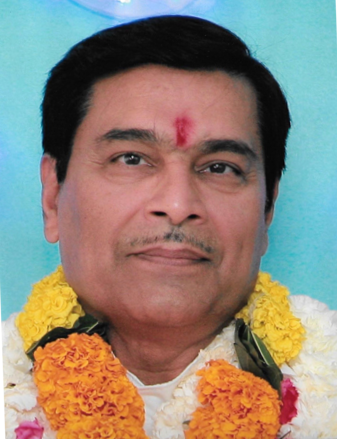From a satsang with Pt. Balram Persad, Spiritual Leader, SWAHA Om Shakti Mandali
Long ago, in the sacred land of ancient India, a time came when drought and desolation plagued the kingdom. Guided by divine wisdom, King Janak, acting upon the advice of his Guru, began to till the parched land in search of sustenance. As he ploughed, the blade struck something in the earth—an ornate singhaasan (throne). Upon the celestial seat rested a radiant baby girl, surrounded by four divine beings, her brilliance casting awe into the hearts of all present. Overcome with emotion, Queen Sunaina gently lifted the child, and together with King Janak, brought her into their home and hearts. Thus, from the womb of Mother Earth herself, Divine Sita Devi made her sacred appearance.
Sita Jayanti, or Sita Navami, is observed on the 9th day of the bright fortnight (Shukla Paksha) in the lunar month of Vaishaakha (April–May), one month after the birth of Shri Raam. On this divine day, we celebrate the earthly incarnation of Sita Devi, known also as Bhoomija, Bhoomidevi, Bhukanya and Bhaumi—names that reflect her origin from Bhumi Mata, the Earth herself.
Like Sita Maata, we too are children of this Earth. She nourishes us, sustains us and teaches us profound lessons in patience, resilience and generosity. The tree bears fruit even when there are storms. The river continues to flow around obstacles. The soil yields crops in natural service. In the same spirit, we are called to remain steadfast in our virtues—even through life’s challenges. This spirit of goodness is the very essence of Sita Devi’s life.
She is also known as Janaki—daughter of King Janak—and by extension, “that which is most dear to one’s life”. What do we hold most dear? Wealth, family, career, comfort? While these are part of worldly life, the values that truly enrich us are our inner virtues—our sense of dharma, love, devotion and selfless service. These are what lend depth and divinity to our existence.
The name Sita means “furrow”—the groove made by a plough. It is a symbol of cultivation, not only of land, but of the human mind and spirit. Just as King Janak prepared the earth for a new harvest, so too must we plough the field of our consciousness—turning inward, churning the depths of our being—to nurture spiritual growth.
Sita Devi is also called Ramaa, meaning “the enchanting one”. But true enchantment lies not in external beauty, but in the radiance of one’s inner light, a personality that emits positivity, compassion and divine vibrations.
As Vaidehi, she is one who transcends the physical—the embodiment of grace that rises above material attachment. While we require basic needs to live, we must not become entangled in obsession with appearances, ornaments or fashion. Sita Devi teaches us that moderation and detachment are keys to true contentment.
Her life was a tribute to the loftiest ideals of womanhood—loyalty, dignity, strength and faith. Though abducted and held captive in Lanka, surrounded by forces of evil, she remained resolute, her heart anchored in the name of her husband, Shri Raam.
Sita Maa was not only a devoted wife but a courageous mother and a true bhakta. She willingly accompanied Shri Raam into the harsh forests, declaring that marriage meant standing by her husband in all circumstances. Later, when exiled from Ayodhya while carrying their unborn children, she raised Lav and Kush in the solitude of a hermitage, instilling in them values of righteousness and courage. Even amidst life’s burdens, she made time for sadhana—asking that they pray before beginning their 14-year exile, invoking divine protection and a safe return.
As we commemorate Sita Jayanti on May 5, let us reflect on the divine qualities that Sita Devi exemplifies. May her life inspire us to cultivate inner strength, uphold our dharma and embody compassion and dignity in all that we do. Let us honour the daughter of the Earth by walking gently upon her, caring for her and serving all beings with love and humility.




Leave a Reply